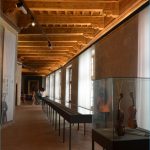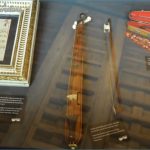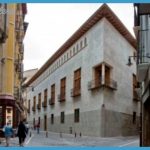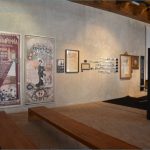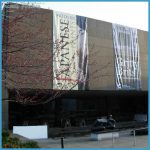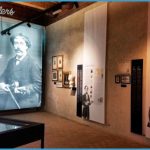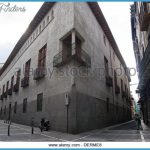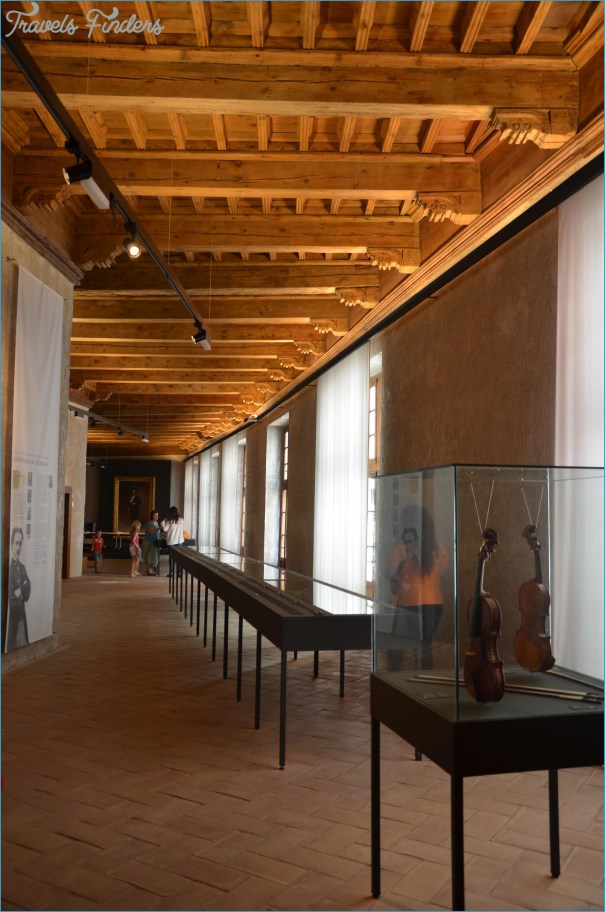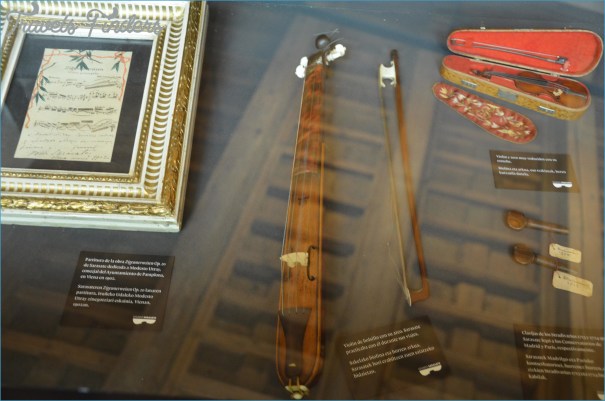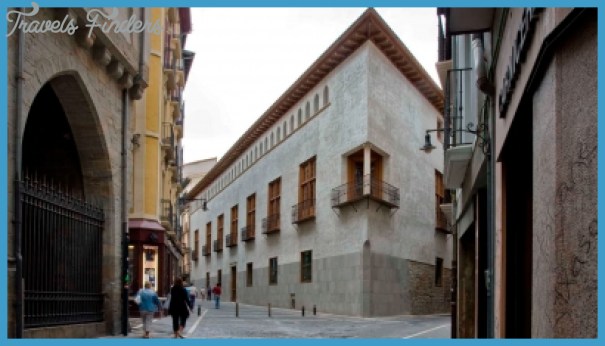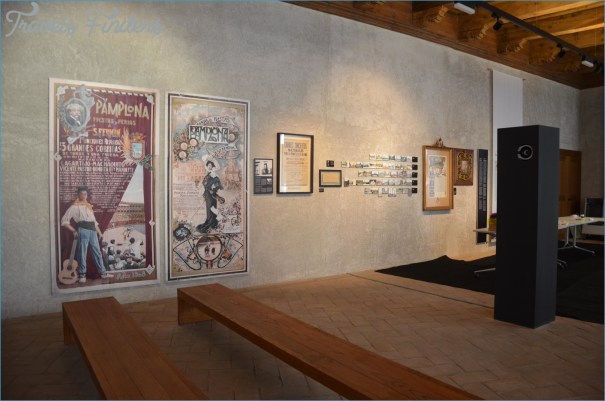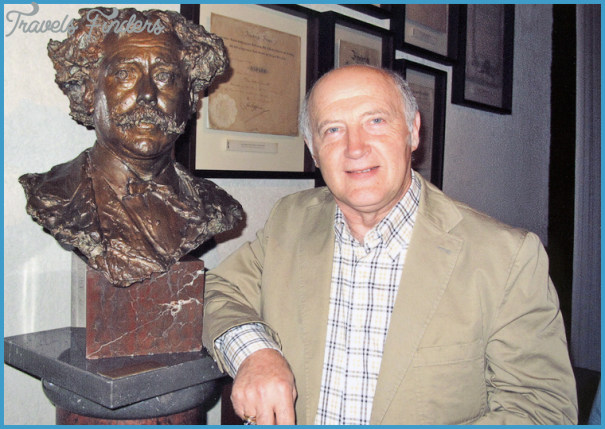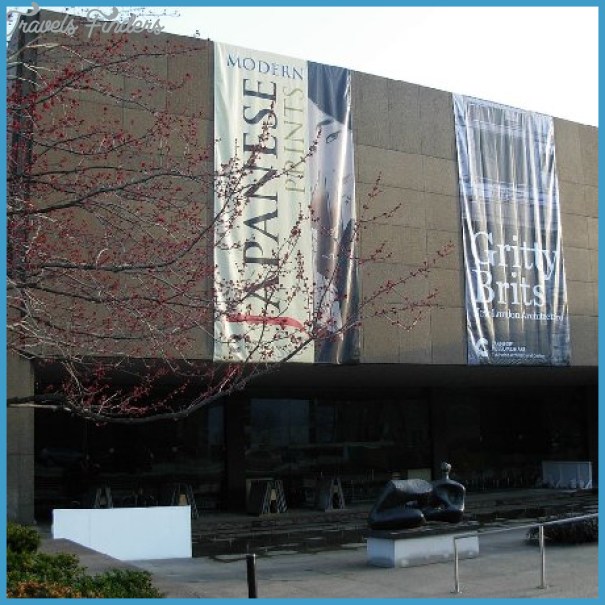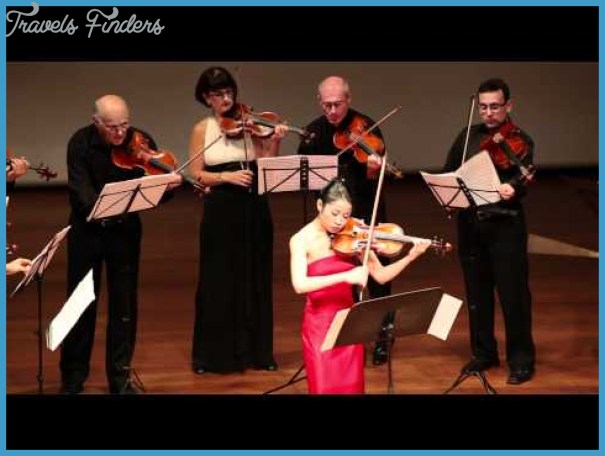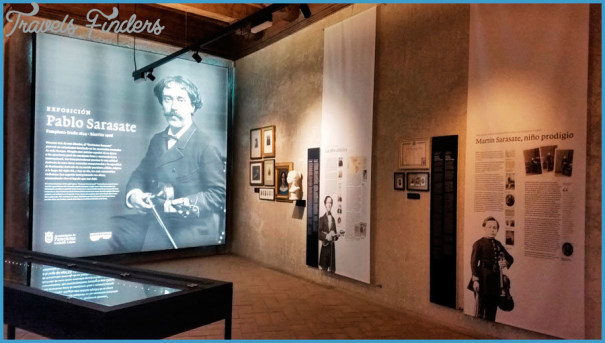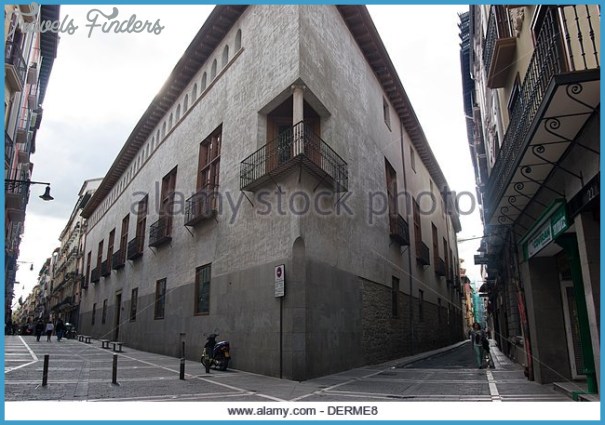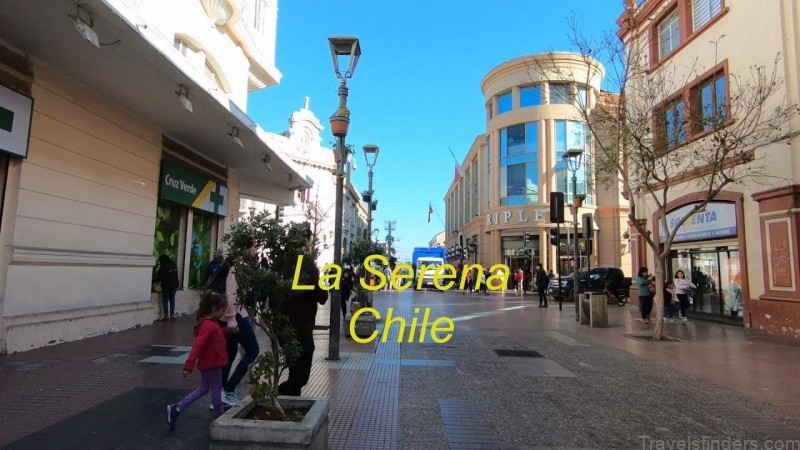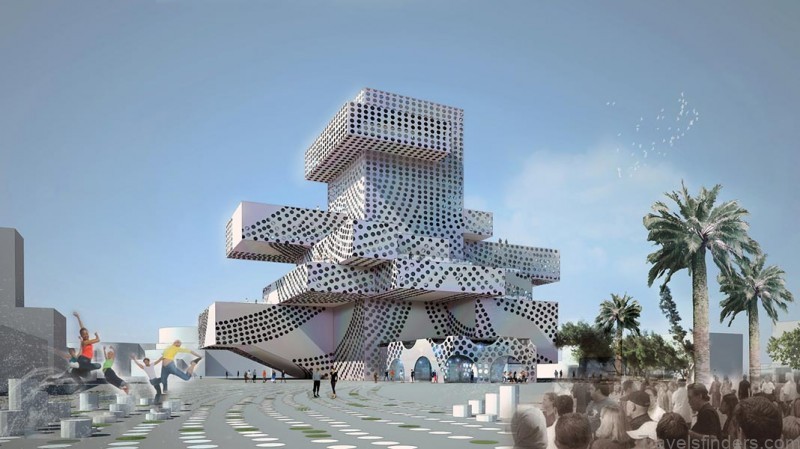SARASATE MUSEUM
It is of course as a violinist that Pablo Sarasate is chiefly remembered. But he composed too, not inconsiderably, and, not surprisingly, chiefly for his own instrument, mainly high-quality, virtuoso salon pieces. There are the famous Zigeunerweisen and many works that are redolent of his native country – jotas, fandangos and the like, evoking the Spanish world. He spent most of his life in Paris and on tour, and he died, in 1908, in Biarritz – not far from the city where in 1844 he was born, Pamplona. The house of his birth no longer stands, but there is a plaque on the house now on the site, in a busy pedestrianized shopping street. Another street is named after him, and there is a statue to him in the Media Luna. The local Conservatorio de Musica bears his name. The conservatory however is not (despite reports to the contrary) the site of the museum to him, which is housed more centrally, in the municipal archive.
The building itself was formerly the Colegio o Seminario de San Juan; the museum was installed in a large first-floor room there in 1991. The room devoted to Sarasate, once a chapel, has a barrel-vaulted ceiling and arched doors, firmly gothick in style, with brightly painted, patterned walls hinting at Moorish influence. As you enter, you see a large oil portrait of Sarasate, by Jose Llaneces, in formal dress with his Gran Cruz de la Orden de Isabel la Catolica. He is more imaginatively represented in the bronze bust by Mariano Benlliure, with its expressive eyes and turbulent hair.
SARASATE MUSEUM Photo Gallery
The presentation is formal and symmetrical, with showcases along the walls and down the centre of the room. Sarasate’s numerous medals, gilded and silver laurels and other honours are lavishly displayed, as too are the countless gifts showered on him by his admirers across the world – jewelled cigarette boxes, watches (one has a chain and fob set with diamonds and sapphires), silverware, crystal, rings, buttons, pins. Among the medals is a particularly elegant set from the Sociedades Santa Cecilia y Orfeon Pamplones. One case contains miniature violins and bows and the original pegs from his 1713 and 1724 Strads (he left the instruments to the Paris and Madrid conservatories). In another are two of his own violins, one a reproduction of the instrument on which he won his Paris Conservatoire premier prix in 1857, the other a Vuillaume expressly made for him. There is also his practice violin, violm de bolsilio’, with a small bow, ivory pegs and inlaid fingerboard. The premier prix certificate is there too, displayed with other framed items, including a pencil portrait done by Whistler in Pittsburgh, a signed photo of the Romanian royal family, concert programmes and family photos. One corner is devoted to his collaboration with the pianists Otto Goldschmidt (formerly Jenny Lind’s husband) and Berthe Marx. Sarasate’s own music is represented too – there is a full list of his works in one case – but understandably it is his distinction as one of the great figures in the history of violin playing that comes across as the message of this dignified and affectionate tribute from his native city.

